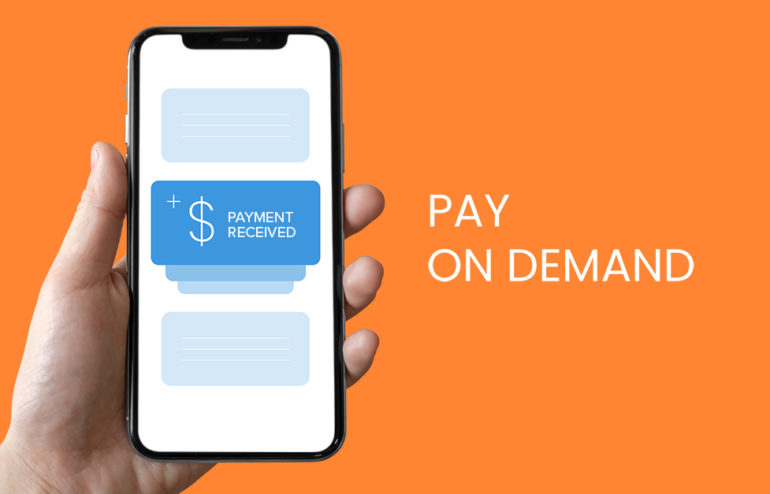If you want to retain employees, you need to consider this benefit.
In 2020 and 2021, companies have not only scrambled to stay relevant, but also
keep employees. Today, employers must not only meet the evolving needs of
their consumers, but also make new efforts to attract and retain employees.
Many have adopted work-from-home policies and other flexibilities to stay
competitive in the employee recruitment marketplace. In addition, companies
have been forced to increase hourly wages to remain competitive. This has
proven to be a difficult option for many small businesses.
While workers are now able to access better pay, the payroll increases don’t
necessarily solve a fundamental problem: Workers want not only flexibility in their
work, but flexibility in their payroll frequency.
Pay on Demand from Time Management Systems is one good solution.
Consider the school teacher or other employee who is paid monthly. A monthly
salary, while competitive, puts that employee at a budgeting disadvantage as
they await their month’s-end paycheck.
In order to help employees better balance their payroll and finances, many
companies are considering a new approach.
Pay On Demand is a fairly new service that is changing how employers attract
and retain good staff. In recruitment, employers want a way to stand out from the
competition. Pay On Demand helps achieve that.
In addition, employees or prospective employees are looking for reasons to
choose one employer over another. Hourly wages are an important
consideration, but access to that pay is important, too.
That’s why companies like Time Management Solutions are seeking new ways to
help companies compensate employees. By offering a Pay on Demand solution,
Time Management Systems is bringing options to employers that help them
remain competitive.
Pay On Demand is fairly easy. Employers who sign up for Pay on Demand can
do so at no cost to themselves. In return, their employees have the option of
“cashing in” a portion of their earned time – or paycheck – before their planned
paycheck date.
Employees simply use our time tracking application, while their employers just
need our phone app or computer access. When employees punch in and out for
the day, the software can determine the hours worked and pay earned. The
employee can then pull up to 50% of their earnings at the end of the workday.
By giving employees an opportunity to cash part of their paycheck before their
planned date, employers can offer a substantial benefit that sets them apart from
their competition. Employees can better manage their household budget and pay
bills at their own convenience by using money they’ve already earned.
Time Management Systems helps businesses set up Pay On Demand
seamlessly. This not only benefits employees, but also the businesses. When
you can offer even the slightest edge on employee recruitment and retention, you
are a better competitor in the marketplace. The service is available to any
business in any industry
Contact Us:





